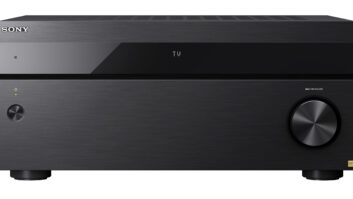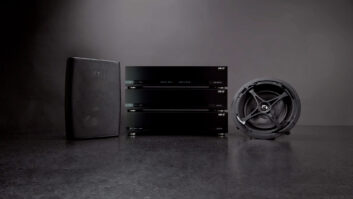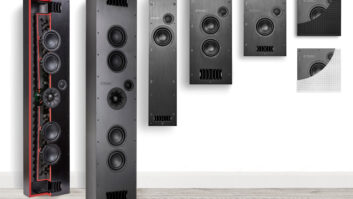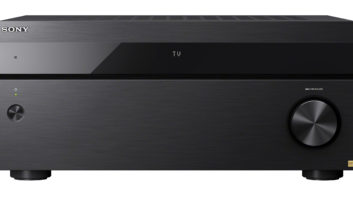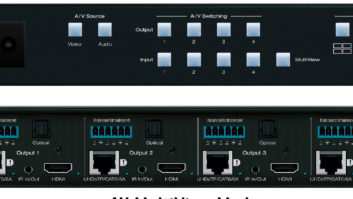When DTS first announced its DTS:X format suite at CES, the details were a bit scarce with the promise of more to come in the spring. Spring has definitely sprung, and a good deal of that added information was announced in an “unveiling” this past Thursday at DTS’s headquarters in Calabasas, CA. While some questions still remain unanswered, much more is now known. With this new data it is a bit easier to plan for home theater systems that are designed to accommodate object-based and immersive audio for not just Dolby Atmos and Auro3D, but now for DTS:X as well.
Along with the home-side specifics, DTS also had a few unexpected surprises that, while not directly impacting the home systems world today, do bear on the broader view of where audio is heading in homes and theaters, from physical media and streaming and from broadcast and satellite.

This type of top-down, “polar”, display shows how audio mixers shows how objects are moved to specific speaker positions for DTS:X.
As a background reminder, DTS:X is described as the company’s “next-generation, object-based, multi-dimensional audio technology.” While the same could be said by Dolby and Auro3D for its similar systems, the press briefing went a long way to point out what DTS sees as the advantage of its approach.
With regard to speaker placement, a key point of contention among the formats and their proponents, DTS took a more neutral approach. Their recommended speaker layout is the conventional 7.1 configuration as a base line. Then, the preference for the added speakers is a 7.1.4, or, as they often referred to it, 11.1, placed as front left/right height and rear left/right height speakers. In some ways their configuration is more like that suggested for Auro3D rather than the “top” or ceiling speaker layout recommended by Dolby with the use of “Dolby Enabled” speakers that point upwards and use DSP and psycho-acoustic technologies as an alternative. It should be noted, however, that the off-center angle for the DTS layout is 45 degrees, as opposed to the 40 degrees specified by Auro3D. The mid-ceiling speakers either as pairs or as a single “Voice of God” (VoG) speaker favored by Auro may be accommodated by DTS:X, but are not mandatory. “Phantom top” speakers are possible down the road, according to DTS, but are not part of the initial implementation.
Here is where DTS posits that its approach has the advantage of using spatial remapping to properly render content in layouts not done according to their recommendations. In other words, they recommend that you use their suggested layout, but if a room has speaker placement problems or if you’ve already installed an Atmos- or Auro3D-centric speaker configuration, DTS claims that their system will do the best job of remapping the speakers to virtual locations for the best and most immersive sound field.
Asked to further define the benefits of their new system compared with the competition, DTS pointed to its ability to more finely manipulate the level of dialog when it is presented to the system as an object. In its construction, to increase dialog capability you don’t raise the level of the entire center channel, but rather have the ability to control the dialog without altering the level of anything else positioned in the center speaker.
Indeed, one thing that DTS seems to agree with Dolby on is that, in the words of Dave Casey, DTS’s senior director of technology strategy and marketing, “Objects are the future…channels don’t give you the flexibility of objects.” It will be interesting to see how this “dialog as a manipulative object” works in real life when compared with the other two object-based audio systems. This feature, however, may not be available at launch.
In terms of the number of speakers that DTS:X can handle, the initial products, most of which will begin to appear sometime this summer and into the fall, can accommodate up to 11 speakers. The ability to render soundtracks out to more speakers, as is already the case with Dolby Atmos and Auro3D, will come later as the basic rendering engine is capable of handling larger arrays.
While all three of the object-based/immersive audio systems have their unique benefits, the goal is clearly the same and this is to some degree not unlike prior situations where Dolby and DTS have taken different approaches to reach the same basic end result. Once we have all three systems in the marketplace it will be easier to see which, if any, will be the winner. However, the fact that most future products above the mid-range price point for AVRs and surround sound processors will accommodate Dolby Atmos and DTS:X and some will also add Auro3D.
With this picture of the “what,” and with the comfort factor that the speaker layouts will likely be somewhat compatible across room conditions to all systems, the real question is “when.” With regard to the hardware, according to DTS you can get DTS:X you can look for software upgrades to select current high-end Denon and Marantz models and the Trinnov Altitude32 along with new 2015 models from Denon, Steinway Lyngdorf, and Theta Digital “Summer 2015.” Additional new models will be available from Integra, Onkyo, Outlaw Audio, Pioneer, and Yamaha in “Fall 2015.”
Of course, without software, the new format is like a tree falling in the forest that no one hears. At this point DTS declined to name any titles that will carry DTS:X encoding for Blu-ray or streaming release. “It’s coming,” was the answer, as one would well expect. However, given that the hardware on which to decode and render it out is still somewhat down the road, there is no need for titles at this point. We’ll be looking closely as to how this develops.
Somewhat related to the “when and what” of content, DTS strayed a bit from the home side of the business to announce that it is re-entering the cinema market with the theatrical version of DTS:X. After all, providing technology for digital audio playback in theaters was at the root start of DTS back in 1993. They sold off the hardware side of that business to DataSat some years ago, and will not be going back into that side of things.

The audio system DTS has withdrawn for consideration by ATSC would have included the ability to select the specific commentary desired in a sports event. The technology, itself, may reappear in other content distribution systems.
This time around DTS will rely on outside licensees such as GDC Technology for the China market and QSC and USL for the rest of the world to provide the hardware solutions. Key here is that DTS is, and will continue to be involved in the licensing of the DTS:X technology for use in movie soundtracks. It is already available in several major mixing stages in California and Canada, with more to come. The push to have DTS:X on the theatrical side augers to the benefit of the consumer home theater world by creating a library of encoded titles and building consumer awareness. Dolby has taken a similar route in launching Atmos, and particularly with the announcement that Carmike will update a large number of their theaters for DTS:X it appears that DTS is taking a similar theater-to-home path.
But WHEN, you ask? The answer for the theaters is this year and the same for titles. The timing for all of this is a bit squishy, but it does point to home products, theatrical installations and at least a few titles for both markets well before the end of 2015.
As DTS is re-entering the theater market and rebuilding its offerings for the home theater world, another item from the press event was with regard to a market DTS is, at least for now, exiting. A version of DTS:X specifically aimed for the needs of broadcast delivery was one of the three submissions for the next generation audio system that will be part of the ATSC 3.0 standard. (More about that later this week in our coverage of NAB.) As is the case with the proposed standards from Dolby (AC-4) and Fraunhofer (MPEG-H), DTS:X for broadcast included not only the object-based, immersive sound, but key interactive features such as the ability to use object-based technology and mixes to do things such as allow the home listener to choose from a pallet of different audio commentaries during a sporting event.
Despite the confidence DTS expressed in its system, the company has withdrawn it from consideration by the ATSC. Instead, it will refocus its efforts on content delivery markets such as streaming services, cable, and satellite, where standards are set by the service provider, and do not need any approvals. That means we may yet see DTS:X on “television” programs, just not on those delivered over the air. Again, anything that uses the same eco-system serves the purpose of any “delivery pipe” by adding to the library of available titles.
A final item addressed was DTS Headphone:X. We auditioned this part of the total eco-system strategy and can report that it did an incredible job of delivering a truly immersive presentation from standard headphones. Indeed, after first hearing a standard “channel circulation test” loop on hard speakers, press listeners were asked to don headphones and listen again. More than one attendee was so convinced at the accuracy of the headphone presentation that they removed the headphones to hear if it was the speakers playing – and it wasn’t.
With the need to convince end users that headphones are for more than ear-bud listening, DTS Headphone:X and similar technologies from Dolby will form an important piece of the puzzle. While the full version may not be available in early AVR and processor products, it is definitely on the product technology roadmap.
A few quick final notes. DTS:X has an upmixer mode, similar to the Dolby Surround Upmixer so that non-encoded titles may be presented in an immersive manner. Similarly, it has an effective downmixer so that encoded content will play back properly in systems without DTS:X encoding or the added speaker positions. Again, this is similar to the competitors and provided to offer backwards compatibility.
Although some present left the event still looking for more details on product and content availability, DTS did make good on its CES promise to provide additional data on the new format. Lacking product and titles it is still a bit behind Atmos and Auro3D, but there was no doubt that by the end of the year DTS plans to fully catch up to their competitors. For the custom and home theater world, the bottom line is that yes, there is not yet another format to deal with. However, it seems clearly designed to live along side systems already in progress for the other two solutions.
With that, the proof of “which is better/which should I choose for my clients” is still something that will have to wait. At the end of the day, this may be one that ends up with more than one format continuing in the market as has been the case with other “Dolby vs. DTS” comparisons over the years. If nothing else, it will add some continued excitement to the market as the new gear is anticipated. To be sure, the world of audio will not be dull through the rest of the year!
CEDIA Fellow Michael Heiss is a contributing editor to Residential Systemsout of Sherman Oaks, CA.



